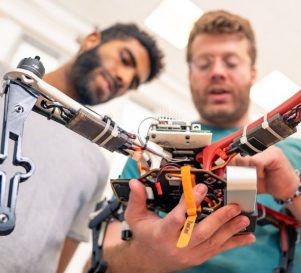The purpose of the study is to develop optimal spatial guidance-laws under terminal angular constraint in atmospheric flight, which enable the pursuer to reach its target under various optimization objectives criteria (minimum time, maximum velocity or minimum acceleration effort), using the traditional acceleration controller, the thrust controller or a combination of both. The research considers several guidance related problems, focusing on developing numerical, empirical and analytical methods for analyzing and solving these problems. In this area of guidance laws with terminal angular constraint, most of the existing studies have been performed under various accumulating assumptions (engagement geometry is linearized, the interceptor is near the collision course and the dynamics are for a vacuum flight) which created a gap between the terms of the studies and the real flight conditions.
In the first part, a novel near optimal closed-loop guidance law is introduced with maximum velocity criteria for the 2D nonlinear problem under terminal angular constraint (based on the linear solution) with performances matching the optimal results very closely. In the second stage, this law is extended to the spatial (3D) case, by determining the preferred spatial maneuver plane based on energy consideration.
In the second part, the spatial problem with ‘minimum-time’ optimization objective criteria under terminal angular manifold constraint (known as Dubbin’s problem) is solved. The study expands the problem to a more difficult case: minimum time arrival with a terminal conical manifold constraint and suggests a near-optimal closed-loop guidance approach to address the 3D problem with time-varying speed and optimal closed-loop guidance approach for vacuum flight.
In the third part, the famous Goddrad problem with various optimization objectives criteria is addressed, where the controller is the thrust input that replaces the traditional acceleration controller. This is a known singular control problem. Such problems are usually characterized by solutions that are difficult to formulate. Previous research generally showed partial solutions to the Goddard problem. The proposed solution formulates the analytical thrust controller in closed loop for various variations of 1D and 2D Goddard problems under different trajectory bending laws. The proposed method can be implemented for other singular control problems in various branches of science.
In the fourth part, the study is focused on the 2D non-linear problem under angular constraints and with various optimization objectives employing two controllers: the thrust controller and the acceleration controller. This problem has been discussed minimally in the literature. The main innovation in this part is the emphasis of the improvement performances potential when using the two controllers in parallel. A convex Pareto curve (in two optimization objectives) including all optimal solutions is obtained. Adding Leitmann’s test for necessary conditions for Pareto-Optimality enables to deepen the understanding obtained from the optimal solutions in this complicate case.










